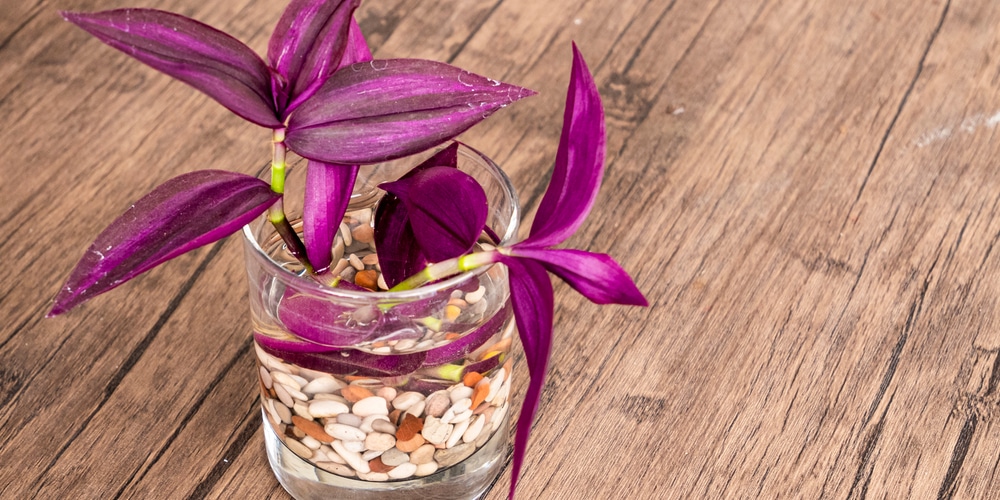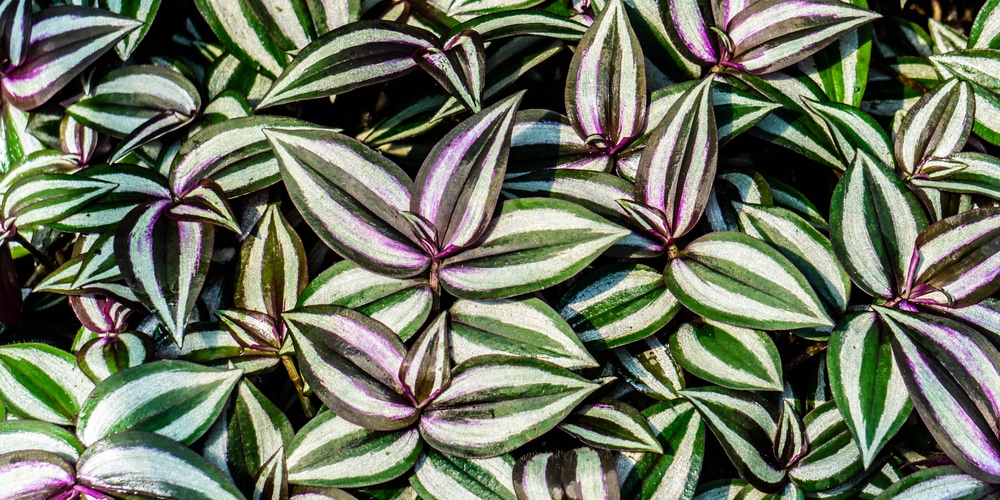If you’ve started finding brown spots on your Wandering Jew plant, it indicates that something has gone wrong. But what?
We’ll look at what causes Wandering Jew brown spots and what you can do to have a healthy plant again.
What Causes Brown Spots on Wandering Jews?

Since the plant does not have many disease problems, Wandering Jew brown spots are generally from root rot or fertilizer burn.
Root Rot
If your Wandering Jew’s roots stay too wet, they can start to rot. As a result, leaves will begin to turn brown.
Root rot can happen because you’re overwatering the plant or the pot doesn’t have proper drainage.
A rootbound plant in a too-small pot is also more likely to get root rot because the roots can clog up the drainage holes.
Fertilizer Burn
If your fertilizer and water mix is too strong, you can burn the foliage when you water the plant.
What Can You Do About Brown Spots on Wandering Jews?
Follow these steps to revive a Wandering Jew’s health if it has brown spots:
1. Prune the Plant
Be sure to prune any stems that contain brown leaves down to the base of the plant.
If you have a lot of brown spots, the pruning might seem a little drastic, but it should grow back good as new. Two new tendrils will grow from the place where you cut, ultimately providing more volume for the plant.
2. Repair the Roots
If you discover root rot, you will need to repair the roots.
After you remove the plant from its pot, rinse all the dirt from the roots and trim off any rotten ones.
A rootbound plant will have a mass or mat of roots at the bottom and often along the sides of the dirt. If it’s rootbound, you may need to soak the root ball in a bucket of water to release all the soil from the rootball. You also may have to work to untangle the roots.
3. Re-pot the Plant
Now that any rotten roots are gone, you can re-pot the plant.
If your plant was rootbound, you will need to re-pot it into a bigger pot. And if your original container had no drainage holes, you will need to find one that provides drainage.
You can use standard potting soil for repotting, or you can make your potting soil mixture from the following:
- 40% cocopeat
- 30% compost
- 30% garden soil
4. Water
Water the plant after repotting and then any time the soil is dry down to ½” deep.
You will want to fertilize twice a month during the growing season. However, to avoid burning the leaves, you should dilute the fertilizer to 50% strength. Be careful to direct the water to the base of the plant rather than letting the fertilizer water touch the plant’s leaves.
Final Thoughts on Wandering Jew Brown Spots
If you find Wandering Jew brown spots, typically it is because you have root rot. Or you have gotten fertilizer on its roots. Luckily, the problem is easy to solve.
A good trim of leaves and roots and repotting can work wonders for its health. You can also use some of the cuttings to propagate your Wandering Jew plant. Also be careful not to get fertilizer on the leaves in the future can prevent further damage.
